Alocasia Plant - Care Tips, Popular Varieties, Propagation
Alocasia is a very characteristic houseplant. It's becoming increasingly popular. Its large and interestingly colored leaves are the most characteristic feature of this plant. Some refer to alocasia as a tropical plant, and indeed, it looks quite exotic in comparison with other species. The ability to clean the air is a big plus. Check the needs of alocasia and learn how to care of it.
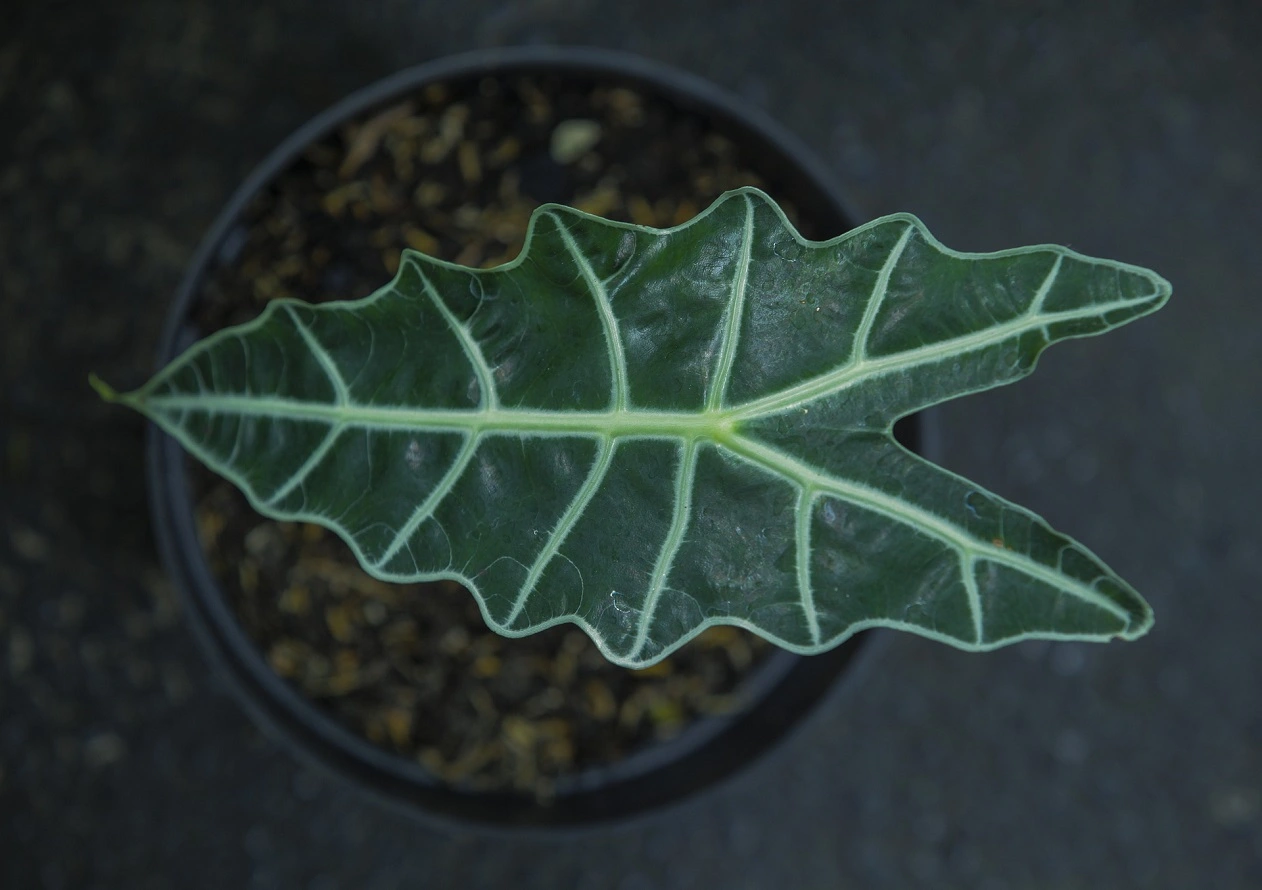
Alocasia – characteristics and appearance
Alocasia (Alocasia) is a perennial originating in Asia, where it grows naturally in tropical forests. In other places in the world, it’s grown as a houseplant. It’s also a perfect species for heated winter gardens.
Alocasia has characteristic-looking leaves. They are very big – growing up to 50-60 cm (1.6-2 ft) in length. Their surface is covered with visible nerves. Interestingly enough, they grow on long stems emerging directly from the underground roots of the plant.
Dark green is the basic color of alocasia plants. The peculiar nerves have various bright colors – white, cream or yellow, depending on the type. Bottom parts of the leaves add a more exotic factor. They are purple in many varieties.
In most cases, alocasias don’t bloom. But if it happens, the flowers are quite small. One has to be careful with the plant, as it’s poisonous. The juice in the leaves is dangerous especially to small children and pets.

Alocasia varieties that will amaze you
Various types of alocasia are available all over the world. They differ between each other mainly in the leaves’ appearance. As estimated, there are over 80 cultivars of this plant. Some are particularly popular.
- Alocasia ‘Zebrina’ – this variety has a specific, arrow-like shape of the leaves. The nerves are distinct and resemble stripes, as in zebras.
- Alocasia ‘Amazonica’ – also called amazonian elephant’s ear. It has characteristic distribution of nerves on the leaves’ surface. The plant has very thick stems. They develop brown color in some varieties.
- Alocasia ‘Cucullata’ – the leaves have arrow-like shape as well. Their surface is slightly velvety, with silver nerves shining through.
- Alocasia ‘Lauterbachiana’ – one of the few alocasia varieties with very long leaves. They are wavy, and the bottom has slightly reddish color.
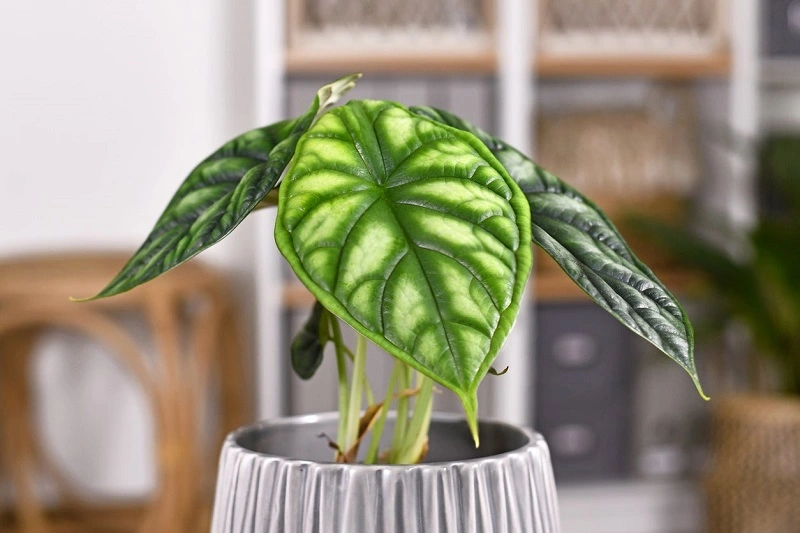
Amazonian elephant’s ear – not each one looks the same
There are many subvarieties of Amazonian alocasias, and they are quite popular. Take a look at the most commonly picked ones:
- alocasia ‘Polly’
- alocasia ‘Bambino Arrow’
- alocasia ‘Calidora’
- alocasia ‘Portadora’
Alocasia – soil, location, and temperature
Alocasia is a plant that requires rich soil of 5.5 pH level. It means it should be slightly acidic. A soil mix with the following elements is the best option:
- peat,
- sand,
- compost.
Make sure to add a drainage layer on the pot’s bottom. You can use small pebbles or expanded clay.
As for the best location for alocasia, it should be sunny. But placing a pot with elephant’s ear plant on a windowsill is not the best idea. The sun rays should be indirect, so a place nearby a window or a balcony door is a better option.
Alocasia tolerates room temperature, preferably 24-27°C (75.2-80.6°F). Temperatures below 19°C (66.2°F) might be dangerous to the plant.
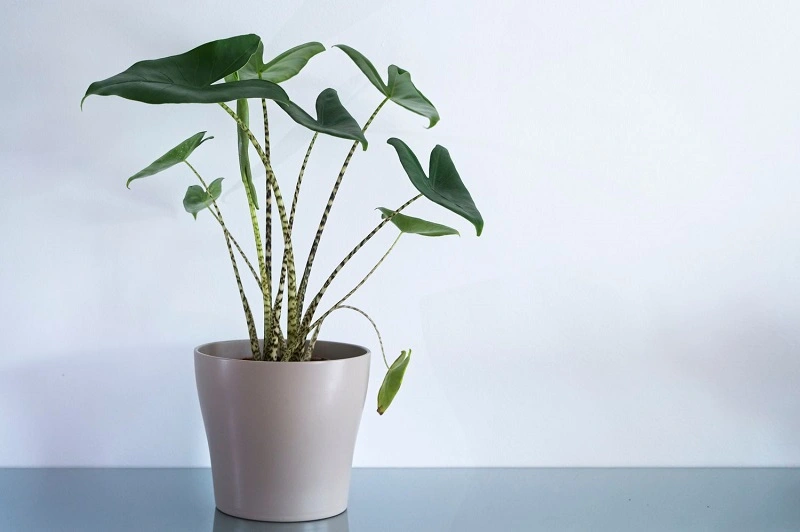
Alocasia – how to water the plant?
Alocasia is a plant that prefers moderate moisture levels. A too dry soil is a great threat to the plant. But the pot shouldn’t be overwatered. Make sure to check the soil every day.
Alocasia – care and fertilizer
Fertilizing is a crucial element of alocasia care. It should be repeated once every 2 weeks, especially between the beginning of spring and the end of summer.
Mineral fertilizers are the best products for alocasias. You can pick either water-soluble or liquid products. The latter are typically more convenient to use.
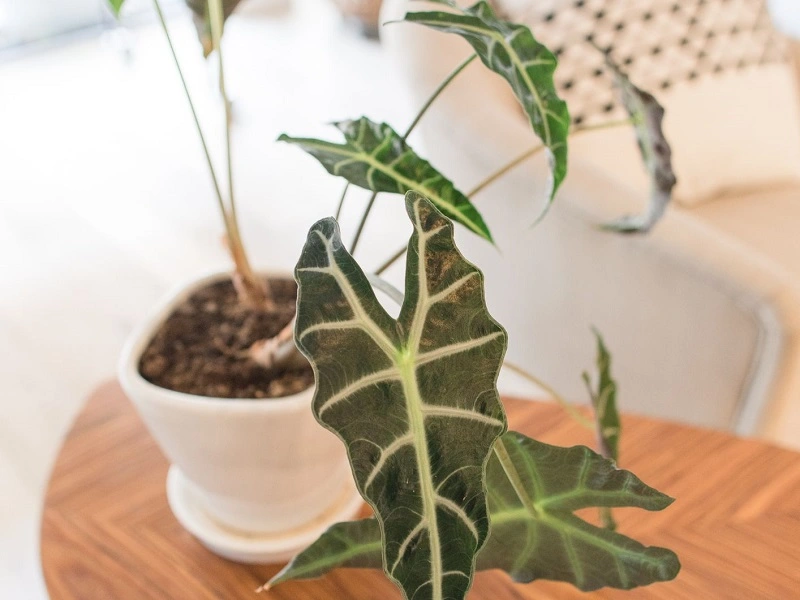
Alocasia – propagation
Although alocasia is quite demanding to maintain, its propagation is quite easy. Just use cuttings from the plant. They should be dipped in special rooting hormone and planted in separate containers.
The best time for propagating alocasia plants is spring. Thanks to this, the plant has a chance to get stronger. Make sure to keep your new alocasias in a bit higher temperature – about 27-28°C (80.6-82.4°F). Also, don’t expose them to direct sunlight.
Alocasia – diseases and pests
Alocasia is quite vulnerable to diseases, especially if it’s kept in poor conditions. Dry soil is a great danger to this plant, so regular watering is essential. What happens when alocasia has not enough water? Here are the most common signs:
- greyish color of the leaves,
- brown spots on the leaves,
- brown edges,
- the leaves turning yellow.
What’s more, alocasia can also get attacked by pests. Spider mites and aphids are the most common ones. If they appear on the plant, an immediate action is advised. You can use natural methods and spray the leaves. If they don’t work, don’t hesitate to use chemical products designed against the mentioned pests.
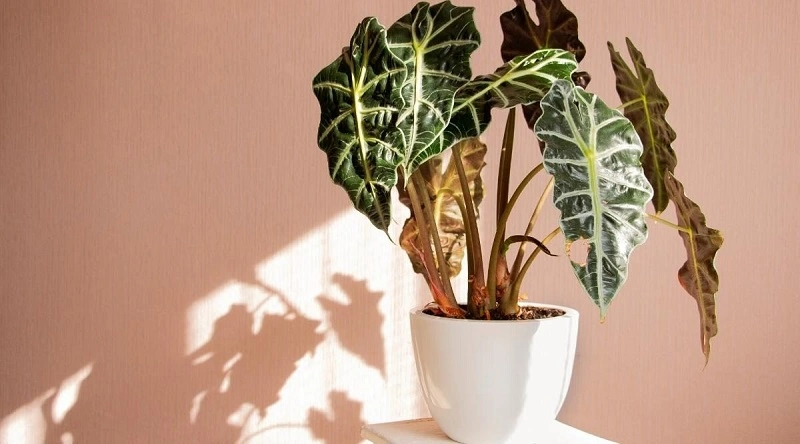
📍 How to care for alocasia?
Alocasia is a plant that likes warmth, damp soil and indirect sunlight. Make sure to water the houseplant regularly, as it doesn't tolerate droughts, and it makes it more vulnerable to diseases and pests. Change the soil every year, so the alocasia grows properly.
📍 What is the best soil for alocasia – elephant's ear plant?
Soil for alocasia should be fertile. Acidic pH around 5.5 level is the best option. You can combine potting mix with sand and peat. Make sure to enrich it with compost or manure.
📍 Where to place an alocasia plant?
Alocasia likes warmth and sunny locations. But it cannot be exposed to direct sunlight. Dispersed sun rays keep the plant in good health and allow them to develop properly.
📍 Alocasia – what is the best pot for the plant?
A container for an alocasia should be quite big. The plant has a well-developed root system and grows quickly – so it requires a lot of space. Make sure to replant it regularly. Do it every 2 years.
Featured articles




